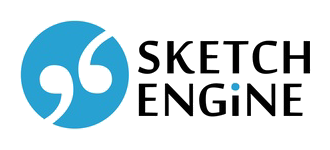A tagset is a list of part-of-speech tags (POS tags for short), i.e. labels used to indicate the part of speech and sometimes also other grammatical categories (case, tense etc.) of each token in a text corpus.
Historical English Penn Treebank part-of-speech tagset is available in corpora of Historical English. It is a special POS tagset aimed to describe grammatical categories of historical language. See more at http://www.ling.upenn.edu/histcorpora/
An Example of a tag in the CQL concordance search box: [tag="ADJ.*"] finds all nouns in plural, e.g. good, slow (note: please make sure that you use straight double quotation marks)
Tagset
| . | sentence-final punctuation |
| , | sentence-internal punctuation |
| ‘ | single quote |
| “ | double quote |
| $ | possessive marker |
| + | joins constituent morphemes in compounds Example: (N+N mankind) |
| A | |
| ADJ | adjective |
| ADJR | adjective, comparative |
| ADJS | adjective, superlative |
| ADV | adverb |
| ADVR | adverb, comparative |
| ADVS | adverb, superlative |
| ALSO | the words ALSO (except when = AS) and EKE |
| (the latter only in Middle English) | |
| B | |
| BAG | BE, present participle |
| BE | BE, infinitive |
| BED | BE, past (including past subjunctive) |
| BEI | BE, imperative |
| BEN | BE, perfect participle |
| BEP | BE, present (including present subjunctive) |
| C | |
| C | complementizer |
| CODE | non-text material (e.g., page numbers) |
| CONJ | coordinating conjunction |
| D | |
| D | determiner |
| DAG | DO, present participle |
| DAN | DO, passive participle (verbal or adjectival) |
| DO | DO, infinitive |
| DOD | DO, past (including past subjunctive) |
| DOI | DO, imperative |
| DON | DO, perfect participle |
| DOP | DO, present (including present subjunctive) |
| E | |
| ELSE | the word ELSE in the collocation OR ELSE |
| EX | existential THERE |
| F | |
| FOR | infinitival FOR |
| FOR+TO | cliticized FOR+TO |
| FP | focus particle |
| FW | foreign word |
| H | |
| HAG | HAVE, present participle |
| HAN | HAVE, passive participle (verbal or adjectival) |
| HV | HAVE, infinitive |
| HVD | HAVE, past (including past subjunctive) |
| HVI | HAVE, imperative |
| HVN | HAVE, perfect participle |
| HVP | HAVE, present (including present subjunctive) |
| I | |
| ID | token identification number |
| INTJ | interjection |
| L | |
| LB | line break |
| LS | list marker |
| M | |
| MAN | indefinite subject pronoun (ME, MAN) |
| (only in Middle English) | |
| MD | modal verb |
| MD0 | modal verb, untensed |
| META | special text material (e.g., stage directions); generally found only in drama |
| N | |
| N | common noun, singular |
| N$ | common noun, singular, possessive |
| NEG | negation |
| NPR | proper noun, singular |
| NPR$ | proper noun, singular, possessive |
| NPRS | proper noun, plural |
| NPRS$ | proper noun, plural, possessive |
| NS | common noun, plural |
| NS$ | common noun, plural, possessive |
| NUM | cardinal number |
| NUM$ | cardinal number, possessive |
| O | |
| ONE | the word ONE (except as focus particle) |
| ONE$ | ONE, possessive |
| OTHER | the word OTHER (except as conjunction) |
| OTHER$ | OTHER, nominal use, possessive |
| OTHERS | OTHER, nominal use, plural |
| OTHERS$ | OTHER, nominal use, plural possessive |
| P | |
| P | preposition or subordinating conjunction |
| PRO | personal pronoun |
| PRO$ | possessive pronoun |
| Q | |
| Q | quantifier |
| Q$ | quantifier, possessive |
| QR | quantifier, comparative (MORE, LESS) |
| QS | quantifier, superlative (MOST, LEAST) |
| R | |
| RP | adverbial particle |
| S | |
| SUCH | the word SUCH |
| T | |
| TO | infinitival TO, TIL, and AT |
| V | |
| VAG | present participle |
| VAN | passive participle (verbal or adjectival) |
| VB | infinitive, verbs other than BE, DO, HV |
| VBD | past (including past subjunctive) |
| VBI | imperative |
| VBN | perfect participle |
| VBP | present (including present subjunctive) |
| W | |
| WADV | wh-adverb |
| WARD | the morpheme WARD |
| WD | wh-determiner |
| WPRO | wh-pronoun |
| WPRO$ | possessive wh-pronoun |
| WQ | WHETHER introducing indirect questions |
| X | |
| X | tag for unknown part of speech |
Extended syntactic tags
The basic syntactic tags listed above can be modified by the following extended tags (also referred to as dash tags).
| Suffix tag | Definition | Example | |
|---|---|---|---|
| -LFD | left-dislocated constituent | ADVP-LOC-LFD | left-dislocated locative adverb phrase |
| -PRN | parenthetical or appositive | NP-PRN | parenthetical or appositive noun phrase |
| -RSP | resumptive constituent | NP-SBJ-RSP | resumptive subject |
| -SPE | direct speech (only on CP, IP) | CP-REL-SPE | relative clause, direct speech |
| IP-MAT-SPE | matrix clause, direct speech | ||
“-#” (a hyphen followed by a numeric index) is used to coindex antecedents and their traces, as well as expletives (overt or empty) that are associated with a clause or noun phrase.
“=#” (an equals sign followed by a numeric index) is used to coindex gapped clauses with full clauses. See Gapping, Right-node raising.
Empty categories
| 0 | empty operator |
| *arb* | arbitrary subject in ECM infinitives (as in I have heard *arb* tell) |
| *con* | subject elided under conjunction |
| *exp* | empty expletive subject |
| *pro* | “small pro” subject |
| *ICH* | abbreviation mnemonic for “insert constituent here”; trace of extraposition, scrambling, or other movement that does not fit neatly into the A/A’ dichotomy |
| *T* | trace of A’-movement |
| * | trace of A-movement; also default empty category |
Source: http://www.ling.upenn.edu/histcorpora/annotation/labels.htm




